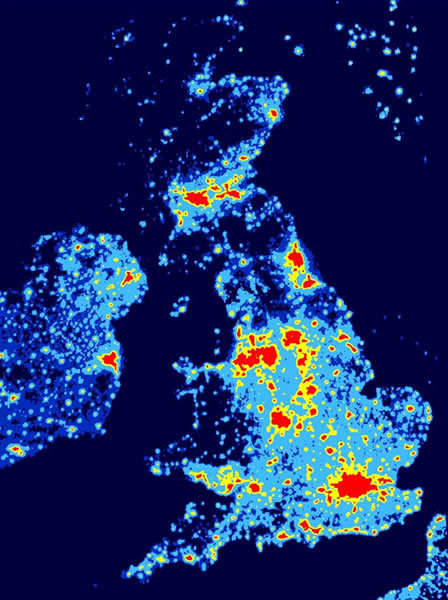Visibility & Light Pollution
6.6 - Understand the causes and effects of light pollution on observations of the night sky6.20 - Understand the factors affecting visibility, including:
a) rising and setting
b) seeing conditions
c) weather conditions
d) landscape
Light pollution
Optical light from human sources. If you go to the countryside or area outside a town on a clear night you will see many more stars than you would do in the city. The reason why you cannot see so many stars in a city is light pollution.
This is the result of so many lights in a built-up area shining upwards and obscuring the night sky. There is a Campaign for Dark Skies which advises local authorities on planning city lights.
Rising and Setting
The Sun’s rising and setting usually bring redder skies. This is caused by the angle of the sun being acute so sunlight having to travel further through Earth’s atmosphere and the light being scattered towards the red end of the visible spectrum. Stars and planet light also has to penetrate thicker atmosphere and clear viewing is difficult. Objects at these angles appear to 'twinkle'. Incidentally at sunrise and sunset the Sun can appear
Seeing Conditions
Saharan dust or volcanic ash in the upper Earth atmosphere can obscure viewing by refracting light/ Human pollution from cars and industries in built up areas.
Weather Conditions
There is a joke that Astronomers sometimes become knowledgeable about clouds. Allright, it’s not very funny but there is truth in this. We get a lot of cloud in Britain. It’s not just what we would typically call bad weather however. During cloudless nights in summer we can experience warmth from Earth ‘shimmering’ stars, in winter ice particles in the upper atmosphere can obscure viewing.
Landscape
Mountains, Trees and natural features can block access to the sky
Other Celestial Bodies
It goes without saying the Sun blocks light from most objects when risen apart. We can still see the Moon (except the days of a new Moon) and only the brighter planets at dusk or dawn. Astronomers tend to dislike stargazing during a bright Moon. This is because the Moon is so bright it obscures light from stars.
Find out more
Look at other atmospheric visual phenomena like sun dogs, sun pillars, moonbows and many others.
Interactive
Earth at night 360°
Questions
- What are the problems of light pollution for astronomers?
- Describe the other visiblity problems that affect astronomers.
See Also
Links
- Check the Light Pollution in your Area! CPRE
- Campaign for Dark Skies Information from the British Astronomical Association



 | © All Rights Reserved |
| © All Rights Reserved |